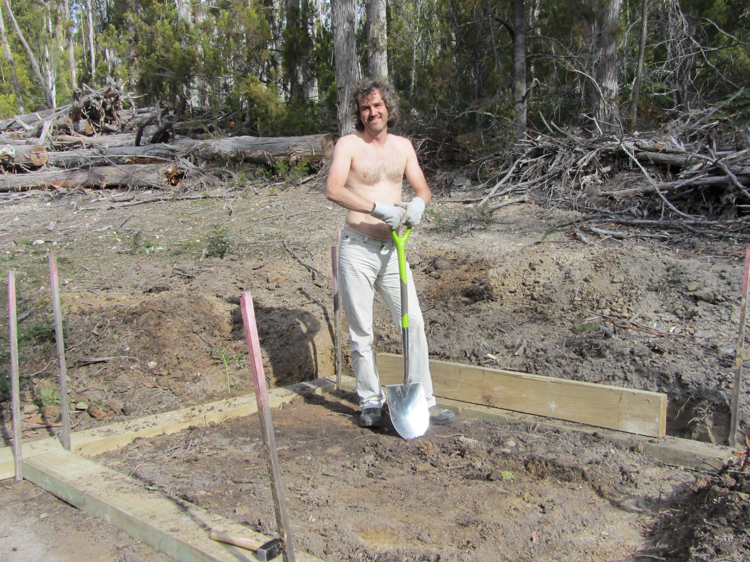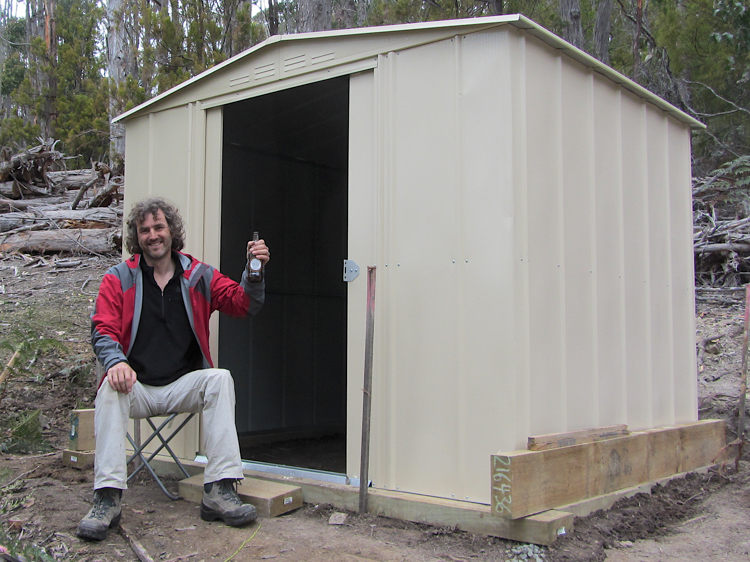Now that we had purchased our forest in Tasmania, we had a great camping destination (albeit one where all our gear needed to be packed in over the creek on foot), but where should we build our house?
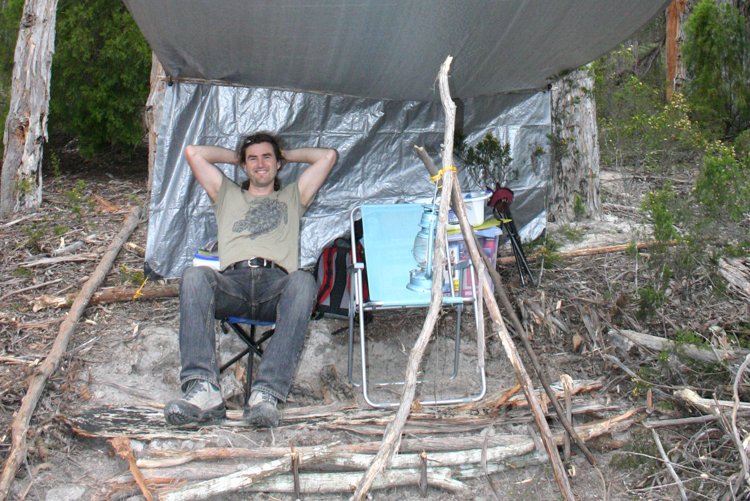
With 14 acres of dry sclerophyll forest to choose from, we spent several visits stomping about, clambering over fallen trees and poking at the ground, we slowly formed a more detailed mental picture of the terrain. The high Southern slopes are steep and rocky, and the low Northern slopes are steep and boggy. To the East, the land falls away steeply to one side. To the West lies the official route of Klynes Road, although in reality there is little more than a rough logging track which terminates at the creek crossing on our border. Still, it is the closest thing that we have to a demarcated border with the farm on that side, so we didn’t want to build in sight of it in case something changes there in the future.
In the end, we decided to put the house on a shelf of less steeply sloping land, more or less in the middle of the forest. After a lot of scrambling around and climbing trees, we ascertained that a raised deck would give us fine views across the d’Entrecasteaux estuary, over the tops of our lower forest. The higher wooded slopes to the South would protect us from storms rolling in from the Southern Ocean. Bravely, we hammered some stakes into the ground.
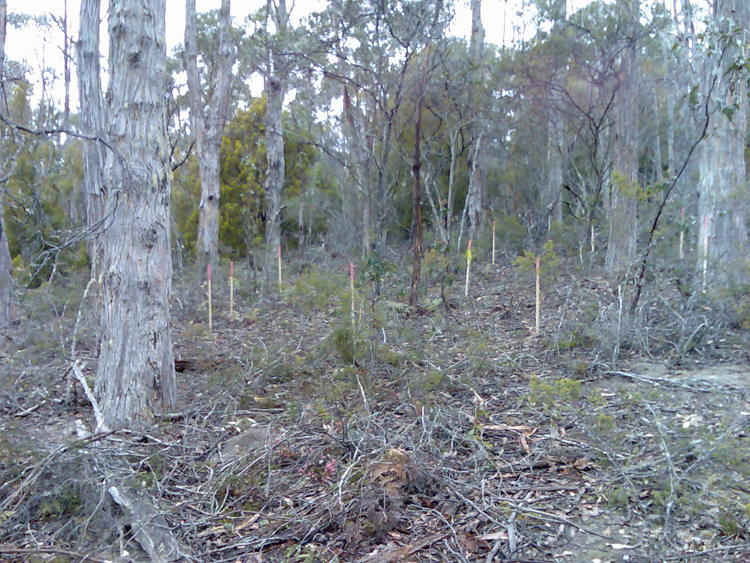
It was still only coloured sticks in a forest, with no access except on foot by crossing the creek at the bottom of the property. However, a neighbour who had built a house further down Klynes Road had access to a bulldozer, so we commissioned him to run a causeway over the creek, push through an access track, and clear the brush from the building site.
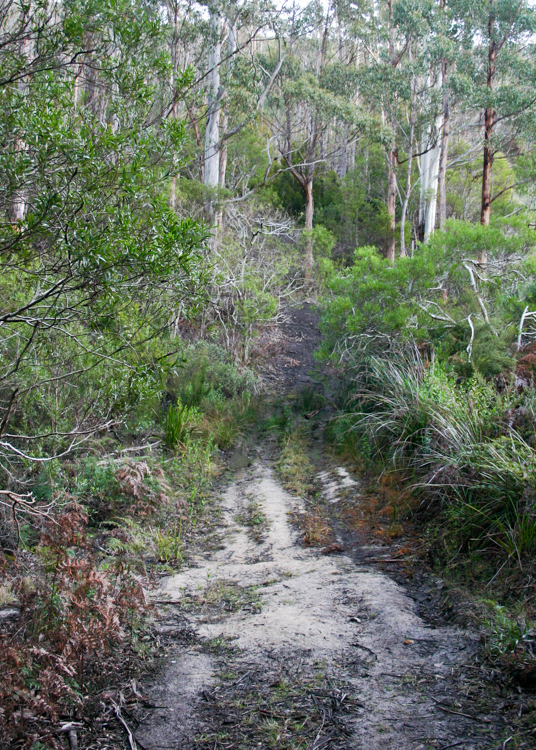
2007 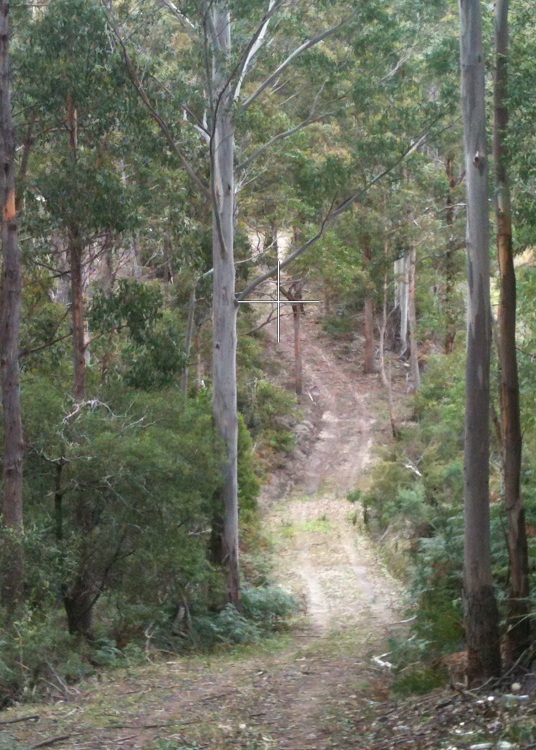
2012

We’d asked him to leave the larger trees for the moment, but to clear anything that had fallen down. This had the unexpected benefit of providing us with chest-high stacks of drying fire wood which will probably last us for years.
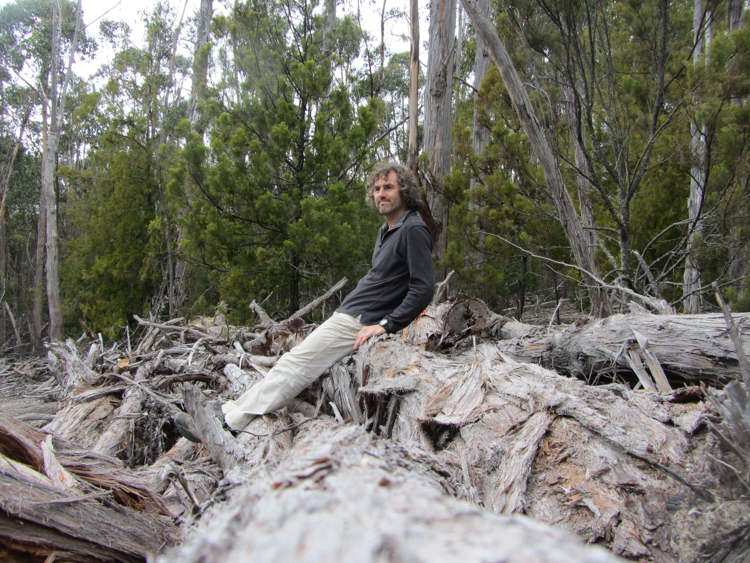
We have no immediate plans to start the house build; all that is far in the future. But now that we can get a four-wheel drive in to our cleared building site, we have a perfect camp retreat at the bottom of the world.

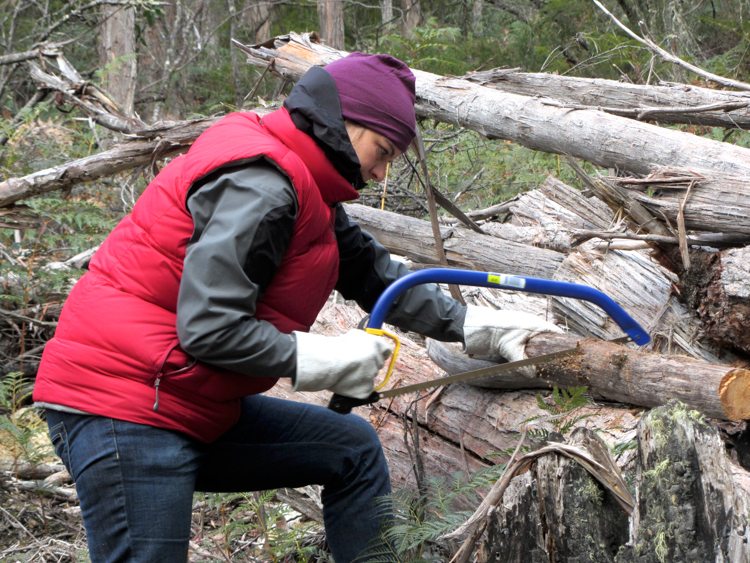
For several years, all of our camping gear had been stored under a bush, wrapped in a tarpaulin. On every visit, we found more holes in our tarp, and sometimes nibble-marks on the tools themselves. We decided to construct a more permanent shelter for our gear, and to this end bought a prefabricated garden shed and some railway sleepers.
